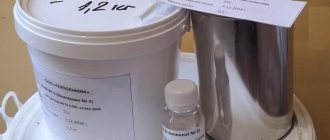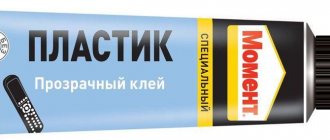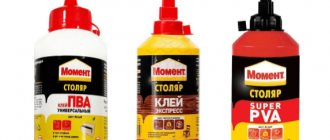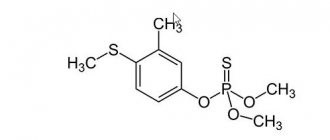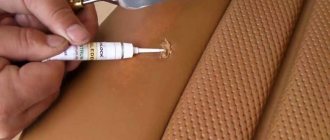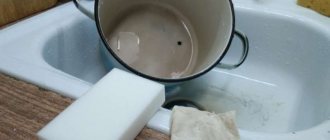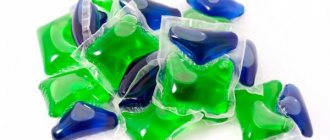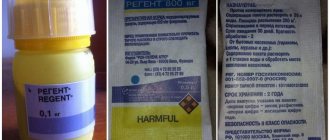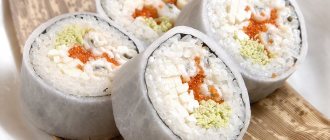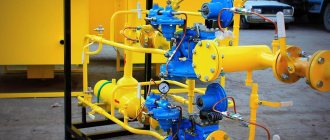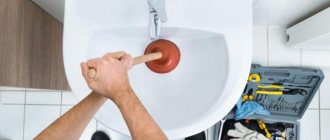What glues Titan
Titan Wild cyanoacrylate adhesive first went on sale in 1992. It is used in repair and construction for gluing different surfaces, which is why it received the title of universal. You can combine materials with the same or different textures.
Titanium glue will reliably connect the following materials:
- plastic;
- ceramic tiles;
- suitable for ceiling tiles;
- PVC;
- aerated concrete blocks, pieces of foam blocks;
- tree;
- in everyday life it is used for crafts and needlework;
- in liquid form it is used as glue for mirrors;
- used for gluing wallpaper, paper, cardboard, foam, linoleum, parquet or carpet.
In addition to wood, polystyrene, concrete, floor coverings, the product glues plaster, leather, polystyrene foam, and porcelain stoneware.
- To lay tile blocks and porcelain stoneware, you need to choose tile adhesive.
- Assembly adhesive is used when installing plastic windows.
- Liquid nails or a universal product can be used to secure mirrors, cabinets, and repair any other household items.
- Waterproof Titanium is used for sealing joints in the bathroom, kitchen, and when processing seams.
The universal composition of the adhesive makes it suitable for use both inside and outside the building.
Glue 88
There are three types of glue 88: 88-CA; 88-NP; 88-N, each of which has its own area of application:
- Glue 88-CA is moisture resistant, used for products in contact with aquatic environments, both fresh and salty, and withstands significant temperature changes. Finds application in construction, footwear, aviation and automotive industries. Used for linoleum flooring. Contact of the adhesive with steel and aluminum surfaces does not cause corrosion, and there is no release of toxic compounds.
- Glue 88-NP - used for gluing rubber made on the basis of rubber to metal, wood, glass, leather, concrete and various surfaces, and for gluing rubber products. The advantages of the glue include moisture resistance, resistance to temperature and the absence of corrosion of steel and aluminum.
- Glue 88-N is used for gluing vulcanizing rubber to products made of metal, wood, plastic, glass and concrete. Recommended for gluing polyisobutylene to metal and concrete.
When it dries or thickens, the question arises - how to dilute glue 88. For dilution, it is recommended to use benzene, the amount of solvent is determined visually - to the state of liquid sour cream and so that the glue does not flow off the brush and does not drag on it (video).
Properties and technical specifications
Properties depend on the components included. Universal transparent adhesive Titan has the following characteristics.
| Characteristic | Meaning |
| Layer thickness | Up to 4 mm |
| Weight of product per 1 m2 | 4.5 kg |
| Force required to break under transverse/longitudinal load | 600/400 N |
| Heat resistance | Withstands temperatures up to +140°C |
When the seam dries, it can withstand strong mechanical stress. After crystallization, it does not become brittle and does not delaminate. The composition of the glue allows it to be used in rooms with any level of humidity. Since the toxicity of the product is minimal, it is safe, but you still need to use it in a well-ventilated area.
Most varieties of Titan look like PVA, but there are also clear, colorless mixtures.
Titanium mounting agent is an analogue of polyurethane foam. Has the same appearance. Unlike foam, glue does not have secondary expansion. That is, polyurethane foam shrinks after the initial expansion, while Titan expands for the first time, but does not shrink further.
Titanium dries in an hour, but the maximum strength of the seam is achieved only after a day.
For reliable bonding of porous surfaces, the composition must be applied in two layers. A completely dry seam is not exposed to sunlight or temperature changes. After complete crystallization, the seam remains elastic, waterproof, and strong.
Varieties
A universal composition is used everywhere. Besides it, there are other modifications, for example:
- sealant Titan;
- glue-mastic;
- Tytan Professional PVA D3 for wood and other analogues.
Universal glue
Titan SM universal glue is used to connect PVC, ceramics, leather, wood, carpet, parquet, and other floor surfaces. It adheres well to polystyrene foam, so it is often used as a ceiling adhesive for attaching ceiling tiles. The mixture should be applied in a thin dotted line to the back of the tile, then wait a few minutes and gently press it to the ceiling. It is available in tubes with a thin spout, so it is convenient to apply even a very thin layer.
The universal composition is colorless, so the seam becomes barely noticeable after drying. It does not allow moisture to pass through and does not lose elasticity either at low temperatures up to -30°C or at high temperatures up to +60°C. The crystallized seam is not susceptible to direct sunlight.
- It is necessary to first clean and level the surface.
- Apply the product to both surfaces in a thin layer.
- Then you need to wait until the composition dries and connect both parts.
- The glued surfaces must be pressed tightly against each other for 5-10 seconds.
Complete hardening of the seam occurs after 40 minutes, its maximum strength is achieved after 24 hours.
The universal epoxy adhesive Epoxy Titan is popular. This is a two-component adhesive that consists of a resin base and an amine type hardener. Bonds metal surfaces, plastic, wood, porcelain, concrete, ceramics, and other materials. Used as a sealant, as a leveling mastic, to seal cracks, pores, and holes. After crystallization, the seam retains its properties at temperatures from -40 to +100°C, it does not conduct electricity, is not susceptible to aggressive environments, and is resistant to vibrations and loads.
Adhesive foam Titan
Adhesive foam “Titanium 60 seconds” works on the principle of polyurethane foam. When exposed to air, its composition polymerizes in no more than 60 seconds. Upon contact with moisture contained in the atmosphere, CO2 is released, which swells the polymer. This is how foaming occurs.
It can be used for installing windows, doors, wall panels, sand-lime bricks, gas silicate blocks, and ceramic tiles.
Adhesive foam increases the adhesive properties of porous substrates. It is used sparingly and seals cracks and potholes in surfaces. Maximum adhesion to the surface after 2 hours. Operating temperature should not be lower than -10°C.
Glue mastic
Titanium mastic is used for gluing ceiling skirting boards, slabs, decorative elements, foam plastic, polyurethane, and expanded polystyrene. The mixture adheres well to concrete, cement, gypsum, wood, and plywood substrates. Mastic can be used to glue fiberboard. Styrofoam mastic can be used to level bases, seal cracks and defects before installing polyurethane objects.
The hardened mastic is resistant to low temperatures and UV light. It contains no solvents or toxins, which means it is safe.
Before applying the composition, the surface must be cleaned and degreased. The mastic is applied with a spatula at an operating temperature of at least +8°C. The initial setting of the mixture occurs after 15-20 s. During the first 10 seconds, the position of the bonded surfaces can still be adjusted. The seam dries completely in 12 hours.
Liquid nails Titan
Tytan Classic Fix assembly adhesive is available in tubes of 0.2 and 0.31 liters, equipped with a mounting gun. The mixture has a white color and a thick paste-like consistency, which, when hardened, replaces nails or screws.
Classic Fix is suitable for gluing metal, PVC, wood, cork, and plaster surfaces. They are used to glue tiles, bricks, polystyrene foam, polyurethane, and cement. Polyethylene, polypropylene, wet surfaces cannot be glued. It must be applied in a thick layer to the surface to be treated. If excess appears, remove it with a sponge. The initial contraction will occur a quarter of an hour after application. The seam will be super strong, resistant even to very low temperatures.
Powder
The product in powder form is suitable for wallpapering. The composition has disinfecting properties. It prevents the development of mold and mildew. The initial setting of the adhesive seam occurs after 5-10 minutes, which allows you to adjust the location of the wallpaper directly on the wall. You can use vinyl, non-woven and paper wallpapers on powder Titanium.
Before use, the powder must be diluted with water until a homogeneous mass is formed.
Afterwards, the composition can be applied to the wall if non-woven wallpaper is being glued, or to the back side of the wallpaper when gluing other types of wallpaper. The paste should be applied from the center of the canvas to its edges. After application, it needs to be given 5-10 minutes to set on the surface. When diluted, the composition can be stored for a maximum of 1 month.
Classification by composition
| View | Description |
| Rubber compound | The entire Titan Professional line is rubber-based. Such mixtures glue wood, chipboard, tiles, plastic skirting boards, and baguettes well. They tolerate temperature changes and heavy loads well. Their seams are strong and elastic. The series includes “liquid metal nails” on which mirror or glass surfaces are attached. Liquid nails "Titanium 601" are also produced on the basis of rubber. They are used for finishing and insulation work, for gluing cornices, panels and sockets. |
| Polyurethane glue | Styro has a polyurethane based composition. They can be used to glue bitumen, mineral wool, thermal insulation boards, and carry out roofing work. Polyurethane compounds have disinfecting properties. Prevents the development of mold and mildew. |
| Acrylic mixture | Titan Express belongs to this type. They can be used to glue stones, trees, ceramic and glass bases. Hardens quickly. Suitable for urgent work. The product “Stucco Decor” is also produced on an acrylic basis, which attaches cork, glass, and any decorative items to the interior. |
| Polymer glue | More often it is recommended to use it for gluing amalgam, alloys, fiberglass, and other materials, when working with which it is important not to damage the surface being glued. The mixture can be used to glue insulation, ceramic tiles, moldings, and used as sealants. It is waterproof and UV resistant. |
The choice of adhesive depending on the characteristics of the base
When listing what is best for gluing ceiling tiles, it is worth mentioning the following adhesive mixtures:
- Solvent-based substances quickly glue surfaces. They are produced on the basis of thermoplastic liquid polymers and special additives.
- Water-based formulations are the most popular. But they take a very long time to dry, which is inconvenient when working on the ceiling (you have to hold the tiles for a long time). These substances are not used in cold rooms. In addition, the water base is a favorable environment for the development of microorganisms, so the base surface needs antiseptic treatment.
- The silicone-based compound dries quickly. The main disadvantage is that after preparation the glue is usable for a short period of time.
- Melt. This is a special glue that is heated to the required temperature before use, so you will need a special heat gun for the job.
- A separate point worth highlighting is liquid nails. These are water-based or solvent-based mixtures that are most often used by professionals. However, water-based solutions are not suitable for use in rooms with wet processes, although they are environmentally friendly and do not harm health.
Attention! Any ceiling adhesive is not suitable for gluing tiles to a ceiling with chalk whitewash, so the base must be cleaned down to the concrete floor.
Each of the above compositions is suitable for working with cement, wood, concrete, plasterboard or gypsum base. As for metal bases, water-based mixtures cannot be used to work with them, since they lead to corrosion processes.
It is recommended to prime the ceiling surface before gluing the finish. When choosing a primer, you should focus on the adhesive used. The primer must be made from the same components as the adhesive mixture to ensure good adhesion of the bonded surfaces.
Instructions for use
The easiest to use is a polyurethane-based composition. It dries quickly and is easy to apply. When working with any adhesive mixtures, it is necessary to ventilate the room.
When using Titan, drafts should not be allowed, as they affect the drying rate of the composition and deteriorate the quality of the adhesion.
- The foundation is being prepared. The surfaces to be pasted are cleaned of dirt and dust. The old falling off coating is removed with a spatula. Holes, cracks, and other defects are covered with plaster or mastic. Metal and plastic surfaces are sanded, degreased, and primed. Next, you need to wait until the surfaces are completely dry.
- If you need to glue complex or large surfaces, then Titanium is applied to both sides. When gluing small bases, the product is applied to one of the surfaces. If tiles are glued, the mixture is applied in the form of a snake. After application, both surfaces are pressed against each other. For better fixation, you need to hold them with your hand for at least 1 minute. The ceiling tiles need to be held in place for the same amount of time. Glued parts and surfaces must be left alone until completely dry.
- The adhesive mastic is applied with a spatula. If the base is small, then the product is applied pointwise. If the surfaces to be bonded are large, the compound must be applied using a continuous method. Liquid nails are applied with a glue gun in the form of waves or stripes. Such compositions can be used on uneven surfaces, with differences and flaws.
If, after gluing, drips and excess mixture appear, they must be removed immediately.
How to dilute Titan glue
If Titanium has thickened, it can be diluted with medical alcohol, alcohol-containing disinfectant liquids or denatured alcohol. Acetone will also work, but in too large quantities it can dissolve the glue.
If acetone is used to thicken the composition, and not to remove stains, then you need to adhere to the mixing ratio of the components. For four parts of thick Titanium you need to take one part of acetone.
This dilution method is very risky, since if the proportions are violated, the strength characteristics of the composition may change.
The powder is diluted with water. No additional solvents are needed. A more liquid consistency of the composition will lead to better penetration into pores and minor surface defects, but the drying period of diluted Titanium is significantly longer.
If thickening occurs in tubes, it is no longer possible to return the normal consistency due to the sealed form of the packaging. Such problems with formulations in tubes occur only after their expiration date.
How and with what you can remove glue
Streaks of even transparent, dried Titanium are very visible in the light, so they must be washed off before the seam has completely hardened. The method by which the composition is wiped off depends on the type of surfaces being glued and on the time since gluing.
- It is necessary to remove glue from porous and soft surfaces, such as polystyrene foam, while it is not yet dry. This can be done with a damp cloth or sponge.
- You can also remove glue from hard and low-porous materials in a dried state, when it can be easily removed by hand. If the product has stuck strongly, you can pry it off with a spatula. This is usually how excess mixture is removed from the ceiling.
If you need to not only scrub, but also clean the surface from traces of glue, it is better to use solvents. Such products are produced by the same companies that produce the adhesive composition itself. At home, you can wash it with organic solvents such as acetone and white spirit. It is removed from clothing when it is completely dry, then pieces easily break off from the fabric and can be removed by hand without outside help.
PVA glue
PVA (polyvinyl acetate) glue is one of the most common, used for gluing materials such as wood, ceramics, linoleum, chipboard, paper, glass, textiles, natural and artificial leather. PVA is widely used due to its excellent adhesive properties, good adhesion to surfaces, resistance to moisture, solubility in water and, last but not least, low cost.
There are several types of PVA glue:
- Stationery - used for gluing paper and cardboard;
- Household (wallpaper) – used for gluing paper products and wall surfaces (plaster or wood);
- Construction - used for gluing materials with a base made of fiberglass, vinyl or paper, added to primers in order to increase manufacturability and adhesion of subsequent materials (putties, plasters or dry mixes);
- Super M - used for vapor-permeable materials, ceramics, porcelain, fabrics, glass, leather, as well as for fixing floor coverings;
- Extra - used for gluing wood, plywood, construction mesh, wallpaper, sickle sheets or as an additive to increase strength characteristics;
- Universal - for gluing paper or decorative elements made of paper or plastic to wood, glass or metal.
Let's try to answer the question, how to dilute PVA glue? It is recommended to dilute household and office PVA glues with warm water with vigorous stirring. The use of other solvents may affect the properties of the adhesive. In case of severe thickening - the formation of a crust on the surface or dry flakes, these crusts and flakes are removed. When diluting PVA, it must be remembered that a large amount of water will reduce the adhesive strength and ductility will also decrease.
To dilute universal and office glues, when they thicken, use acetic acid or organic solvents such as acetone, methanol, ethyl acetate, benzene.
